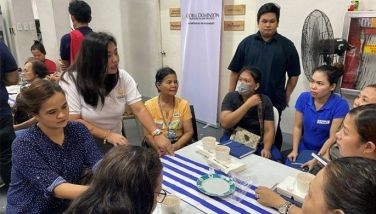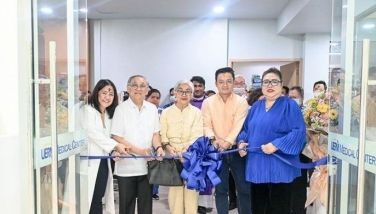The need for a design council

When we discuss branding the country, the first touch point of the outside world will be the Filipino himself. Upon meeting and building a relationship with the Filipino, the foreigner will have a glimpse of this unique Pinoy spirit, his culture the way he relates, lives, eats, enjoys life, etc. In trying to define this DNA, this unique spirit, the word “creativity” is a natural fit. Creativity is deeply embedded in the country’s cultural context. It is this unique spirit that gives drive to the various expressions and products that can help create areas of wealth generation and bring our country in sync with the wider trends of the global economy.
I write about the Creative Industries. These are the industries that are driven by creativity and knowledge as the intellectual capital. Our creative industries are the second touch points of the global world in understanding and defining the Filipino. What are the creative industries? These would be MEDIA AND LIVE EXPRESSIONS (film, software, music, performing arts, publications, TV and radio); DESIGN AND VISUAL (advertising, architecture, crafts, design, designer furniture, visual arts) and HERITAGE (arts and antique markets, heritage both tangible such as our churches and intangible, such as the rituals, practices, storytelling of our indigenous peoples; and museums and galleries that house our heritage). The Culture sector would argue that “Heritage” should be called the Cultural Industries as opposed to the Creative Industries and this is where the discussions have confused the general public.
Here’s how I understand it: Creative Industries have an end product that is tangible (a designer fashion showcase, a painting or sculpture, a musical performance that is recorded, a coffee table book, an animation game, a film that can be distributed, a piece of furniture one can sit on, etc). The products of the Creative Industries are created for the mass market and have more popular appeal for use in daily life. Meanwhile, the Cultural Industries often have intangible end products such as a way of ritual celebration that is slowly vanishing, museums that offer the experience of art and culture, etc. These are pretty vague to the general public. (And this is the topic of a totally different article.)
However, one thing is clear today these sectors all need to be sustained, developed in a more strategic and focused manner for the global market and audience so we can harness these not only to make us look good out there, but to create jobs, industries, brands and presence furthering trade, tourism, diplomacy and dialogue, strengthening national identity. The question to ask is “what is unique in our Creative Industries that makes it the Philippine creative industry and not Thailand’s, Korea’s or Singapore’s? This is the question we need to answer for each sector. What makes Filipino furniture Filipino is it the design, the material? What makes the visual arts Filipino? Is it the themes? And so on.
A low hanging fruit in all this is Design. Design not only in the visual sense, but also innovative design in terms of software and applications, and information and communication technologies for the ICT industry. Let me focus only on Design in the visual sense as this itself is so broad a subject. At present, our country does not have a design philosophy, a framework or even a Design Council. What is happening is that independent designers are just moving forward as best they could, many receiving accolade for their excellent works being recognized and gaining markets abroad.
What happens to our young students who want to venture into design? There is no educational direction by which the young can be guided. There aren’t enough shows, exhibits and fairs to highlight design trends both locally and abroad that the general public can have access to. There are no guidelines for private developers about putting up architecture that are imprinted with cutting edge ideas. Worse off are small community groups who create products and cannot value these up since there is no national framework for design for development. This was what was obvious to me in the past year as we in ECHOstore went all the way from north to south looking for products of communities to sell. There was nothing new or exciting. So we ran ECHOdesign Lab, a mentoring program that focuses on sustainable design, product development, packaging innovation and branding. This program helps to add to community products’ visual appeal for the fair trade market while we try to keep indigenous people’s cultural expressions intact without corrupting their local cultures.
What is important to also highlight is the Senate Bill No. 2930 sponsored by Sen. TG Guingona that is pushing for the creation of Design Council of the Philippines. He says, “Today, the term ‘Design’ has evolved into a new development paradigm a discipline that several nations now see as a driver of economic growth and a vital tool for shaping human interactions and social systems.” The Bill is to boost the competitiveness of the Filipino design industry, so that it can become a driver of economic growth and social innovation. Its main task is the promotion and development of the Philippine design industry through the formulation of a comprehensive National Design Policy. This will bring design practitioners and concerned government agencies together. The bill states: The national design policy will: 1) expand the design culture nationwide by creating demand and appreciation for good design and conceiving effective and sustainable promotional strategies that take social, environmental and economic considerations; 2) propagate design as problem solving by conceiving effective and sustainable design-related strategies that drive economic growth through employment and trade and social innovation that is sustainable, efficient and accessible; 3) boost the competitiveness of the Filipino design industry through improvement in design education that will build capabilities, establishing networks and resources for knowledge exchange, provide opportunities to showcase Filipino talent, among others; and 4) build a strong national identity.
Here’s hoping this Bill will be passed soon!
(E-mail me at jeanniejavelosa@gmail.com or follow me on Twitter @jeanniejavelosa)















